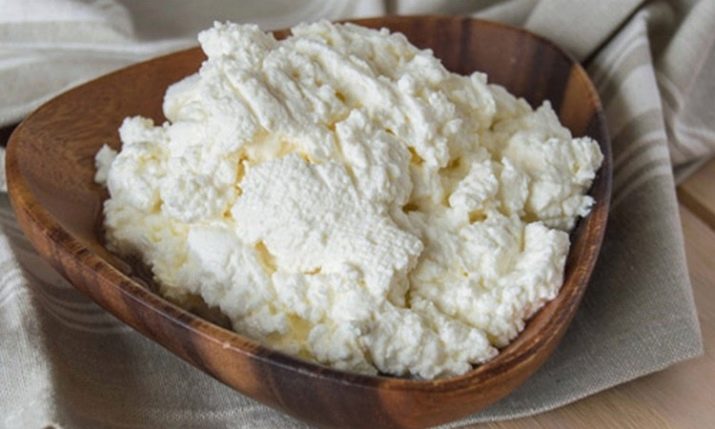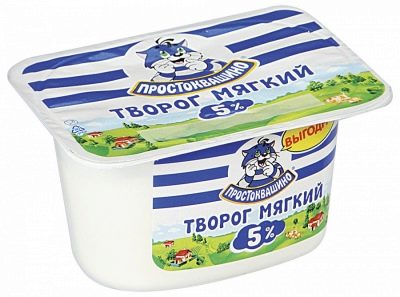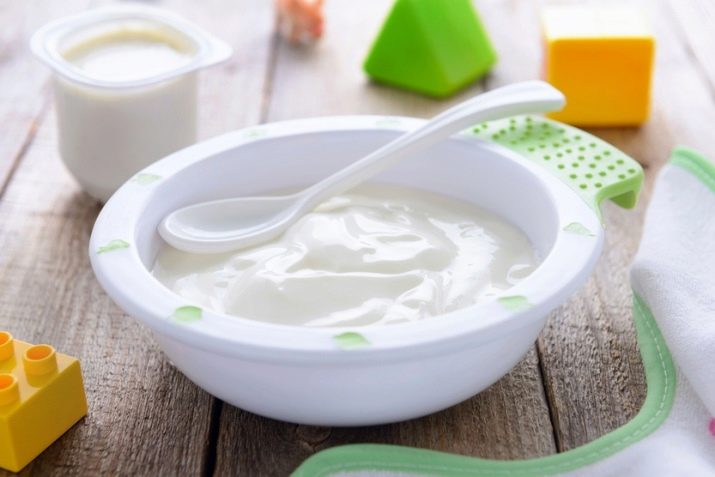Features of the use of cottage cheese during pregnancy and breastfeeding

Cottage cheese is not only tasty, but also very useful dairy product. It is recommended for both adults and children, because it helps strengthen bones and has a beneficial effect on the entire human body. However, many women are concerned about the question of whether to use this product during pregnancy and breastfeeding, it is also interested in the permissible amount. To the future mother knew exactly what diet she needs to adhere to, it is necessary to understand this in more detail.
Composition and nutritional value
It has long been proven that one who regularly eats cottage cheese does not have serious health problems. This is due to the presence of many valuable vitamins and minerals in the composition of this product.
- Vitamin A promotes active growth (which is important for children), improves eyesight in people of any age category, accelerates the healing process of wounds.
- Vitamin B participates in the formation of cells, helps in the normalization of metabolic processes, improves the state of NA, eliminates stress.
- Vitamin C helps protect the immune system, resists infections, is involved in the regulation of proteins, fats and carbohydrates, has a beneficial effect on the blood, preventing the appearance of tumors.
- Vitamin D strengthens bones, reduces the possibility of cancer, gives strength and energy.
- Vitamin E helps to normalize the heart and blood vessels, strengthen the immune system, rejuvenate the skin, improve the condition of the skin and nails.
- Calcium provides an opportunity to strengthen the bones, helps the process of blood clotting, lowers cholesterol in the body.
- Iron helps to saturate the blood with oxygen, participates in the work of the brain and NA, contributes to the normal functioning of the pancreas.
- Magnesium participates in the process of normalization of metabolism, helps strengthen the NA and adds energy to the body.
- Sodium helps the harmonious work of the heart, removes toxic substances from the body.
- Copper has analgesic and antipyretic effects, protects against infections.
- Phosphorus takes part in the formation of bone tissue, is an auxiliary substance for the assimilation of vitamins by the body, helps to improve memory.
- Zinc lowers the level of sugar, affects the brain, stimulating its vigorous activity, helps to update the cells of the body.
- Fluorine participates in the prevention of osteoporosis, helps strengthen tooth enamel and bone.
The curd contains a large amount of calcium (97 mg per 100 grams of product), because its regular use improves the condition of bones and teeth. Another important feature of this product is the presence of amino acids that the human body cannot produce on its own. It:
- tryptophan (synthesizes hormones responsible for sleep and mood);
- lysine (helps the immune system);
- methionine (involved in the regulation of fat metabolism in the body, stimulates the normal functioning of the liver).
The presence of casein gives a feeling of satiety for a long time. Depending on the fat content of the energy value of the product varies. You can find options such as: 0%, 5%, 9%, 18%, 22%. Adding raisins, dried apricots and other foods high in carbohydrates still increases caloric content. Nutritional value directly depends on these indicators, which can be seen in the table below.
% fat | squirrels | fats | carbohydrates | calorie |
0% | 16.5 | 0 | 1.3 | 71 |
5% | 21 | 5 | 3 | 145 |
9% | 18 | 9 | 3 | 169 |
Indications and contraindications
Cottage cheese when breastfeeding is needed by a nursing mother, because it is important for her to quickly replenish the balance of vitamins and minerals, which she passes to her baby through milk. The use of this product causes positive changes in the woman's body.
- Cottage cheese raises the level of calcium, which goes along with breast milk. The lack of this element adversely affects the skin, bones and nails of the mother.
- In case of improper feeding while feeding with milk, the woman often has heartburn, which cottage cheese can neutralize.
- The product promotes the excretion of urine and bile.
- Hemoglobin in the blood rises to normal levels.
- The work of the heart improves, it has a beneficial effect on the vessels.
- The metabolism is getting better.
- Improves the work of the National Assembly, which affects the mood.
According to pediatricians, the young mother during the period of breastfeeding can and should eat cottage cheese also because its benefits extend to the body of the baby. A woman's diet has a direct impact on the proper development of the newborn, because the state of the child also depends on the health of the mother.
However, besides the positive effect of cottage cheese, there are several factors that can do little harm to the health of the child. Since the product contains casein, it can cause allergies, negatively affecting the children's body. Sometimes after mom's use of cottage cheese, the newborn has constipation or, conversely, diarrhea. Frequent occurrence can be called colic, arising from increased gas formation. Also, after HB, the baby may develop a rash on the skin.
If something of the above is observed in the child immediately after the mother uses the cottage cheese, it is worth giving up the product for a month. Then you can try again. Complete abandonment of cottage cheese for mothers and babies is necessary only in the case of lactase deficiency, when the enzymes of the product are simply not absorbed, causing harm to the woman’s body.
Contraindications for taking this product include:
- component intolerance;
- lactose intolerance;
- problems with the work of the hepatic ducts;
- Urogenital diseases (stones);
- tendency to corpulence (limiting the reception of fat cottage cheese).
Even before the birth of the child, the expectant mother should eat cottage cheese. It helps to restore the level of calcium, which is so actively consumed in the process of growth of the baby in the womb. The presence in the diet of such a component will be favorable for both mother and baby. There is a need for it daily for 100 g or every other day for 150-200 g. The presence in the body of the optimal amount of calcium in the 2nd and 3rd trimester of pregnancy helps to make a fully developed child, and also strengthen the health of the woman herself.
Product selection
For pregnant women, not only the composition of the menu is important, but also the quality of the products. It matters the right choice of cottage cheese. The most useful is homemade, but it is important that it is fresh. If you purchase such a product is not possible, it is worth taking a low-fat store option.
Better use for food 5 or 9 percent product. Such options include all necessary components. At the same time negative impact is minimized. If there is a fatty variety, it will result in a large load for the liver and will contribute to the appearance of extra pounds. Fat-free cottage cheese also should not be chosen, because calcium and a number of vitamins without fat simply cannot be absorbed. In this case, the young mother will not benefit.
The presence of animal fat during lactation is very important for a woman and her baby, because their lack will lead to an imbalance of hormones and hypovitaminosis. A five or nine percent product would be the best option for a woman who is not overweight. But if the task is to lose a little, then the fat content of the curd should be 3-5%. This will give the necessary benefits to the body and will not be deposited as excess fat.
A young mother can eat homemade cottage cheese, cooked by hand from fresh ingredients. Such a product can be consumed up to 500 g per day, but you should not exceed this amount, otherwise only harm will be received instead of benefit.
You should not eat cheese mass, because it contains a lot of sugar. It is harmful to the baby and contributes to weight gain. Inclusion in the diet of cheese curds in chocolate, flavored products with dyes and fillers will not bring the expected benefits, but it can harm if the content of low-quality ingredients is present.Also, do not try to replace the cottage cheese with cow's milk. These are different products, their assimilation by the body takes place in different ways, because they cannot compensate each other.
If you are not able to purchase a quality home product, it is important to make the right choice in the store. It is necessary to pay attention to the freshness, for this every time you need to look at the shelf life. Cottage cheese should be packed at the enterprise, and not be in a simple plastic bag.
Remember that it is better to choose products with an average fat content (the percentage of fat should be indicated on the package).
The correct input in the diet
Having decided on the choice of product, you need to learn how to correctly enter it into the menu after the birth of a child. If a woman consumed cottage cheese during pregnancy, then her child has become accustomed to this type of food of the mother. However, in the first month it is worthwhile to limit the usual diet, wholly devoting it to the baby, so as not to cause him any discomfort.
At first it is worth trying to eat one or two teaspoons of the product per day to see if there will be a change in the behavior, digestion or appearance of the child. The introduction should occur when using pure product, without any additives, to accurately determine the effect of cottage cheese on the baby.
In the early stages, it is better to eat cottage cheese in the morning, in order to observe after lunch whether there will be any reaction in the child. In the case of normal well-being of the baby, the usual chair and no rash, you can increase the amount to 50 g per day. So, exploring the reaction of the baby, you can increase the portion each week, so that by the six months of the child it was 150-300 grams.
This amount should be eaten. little by little, so as not to burden the children's body. It is also worth considering that the use of cottage cheese for the mother should be made two or three times a week, because it causes fermentation processes in the stomach, and this is transmitted to the child.
Worthy analog
If a pregnant girl or a young mother does not like cottage cheese, it can be replaced. In case of personal dislike for an empty product, you can add dried fruit, berries or yogurt to it. If this does not help, you can cook a variety of curd dishes (casseroles, cheesecakes, puddings or souffles). If even these options are denied, it is necessary to find another source of calcium. It may be:
- sesame;
- hard or soft cheese;
- halva;
- broccoli;
- different types of nuts;
- rice;
- yogurts;
- White bread;
- dried figs;
- black currant and not only.
Choosing the right alternative will help the mother maintain her health and strengthen the baby’s body. Entering any option in the menu, you should do it gradually, taking the product in a minimum quantity and waiting for the reaction of the baby. In the absence of ailments, you can slightly increase the amount of food eaten and so do each time until the diet is stable.
Products that are combined
To get the maximum benefit from the use of cottage cheese, you need to properly take it for food. To do this, you need to know with which products it can and should be combined. The most suitable are:
- sour cream;
- fruits;
- nuts.
The use of cottage cheese with cherries, which can be eaten during breastfeeding, is very useful, especially for light varieties. Dried fruits will also be an excellent addition to give the dish a piquant taste (dried apricots, dates, prunes - all this can and should be included in the diet).
Cottage cheese goes well with vegetables. It becomes an excellent ingredient for various salads, which are made with olive oil. To diversify the palette of taste, you can use spices, celery or Chinese cabbage.
Very tasty delicacy is obtained by adding honey, but young mothers should be wary of this combination, because honey can cause severe allergies in the baby. Therefore, such food is better to use after the end of breastfeeding.
In addition to products that can be eaten with cottage cheese, it is worth knowing about those that are not desirable in this combination. Due to the presence of casein, which is digested for a long time, you should not eat heavy food at the same time. This will lead to problems with the stomach, while the beneficial substances of cottage cheese will simply not have time to digest. With cottage cheese you should not eat meat and fish, it is better to limit the use of eggs.
Dairy products are also best not to mix. Drinking milk and eating cottage cheese are not worth it, because in such a duet the amount of calcium increases greatly, so instead of being good, the body receives only calories. The same can be said about sugar, which makes food much more high-calorie, which prevents the rapid absorption of calcium.
About what is good to eat during pregnancy, see the following video.



































